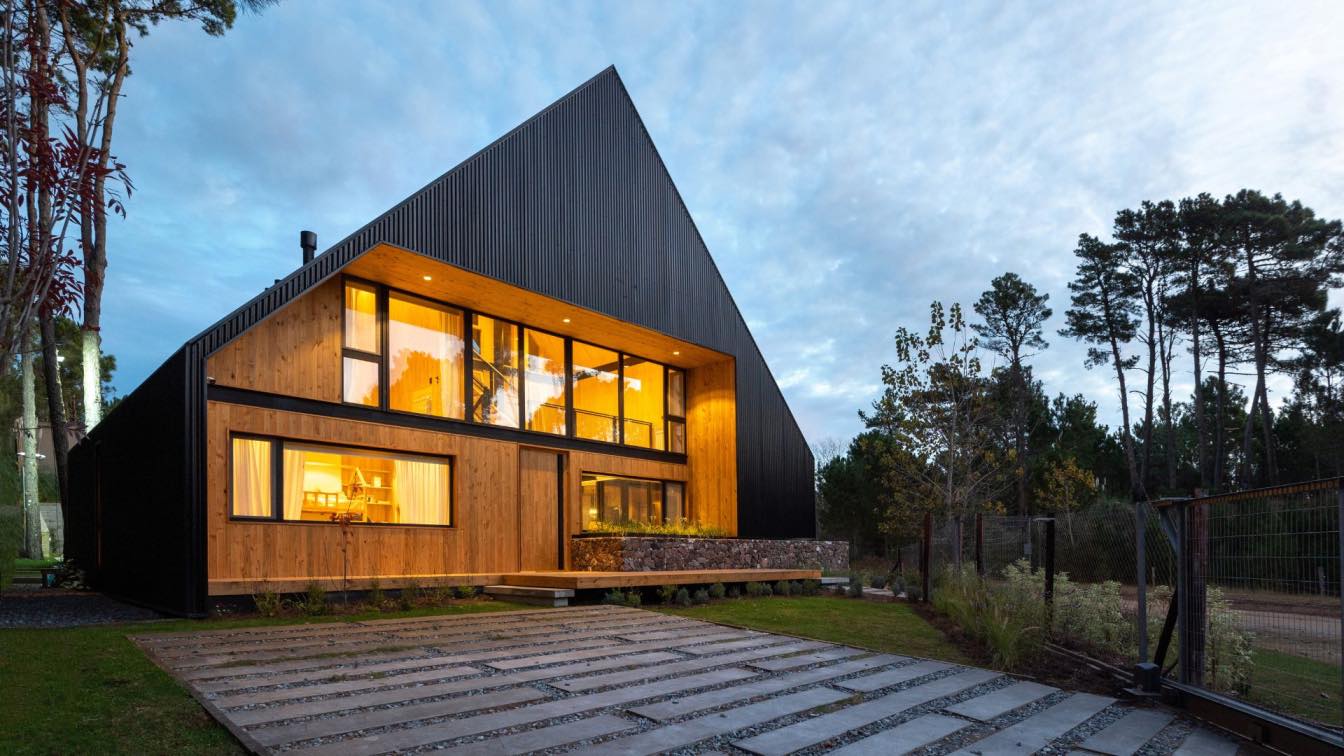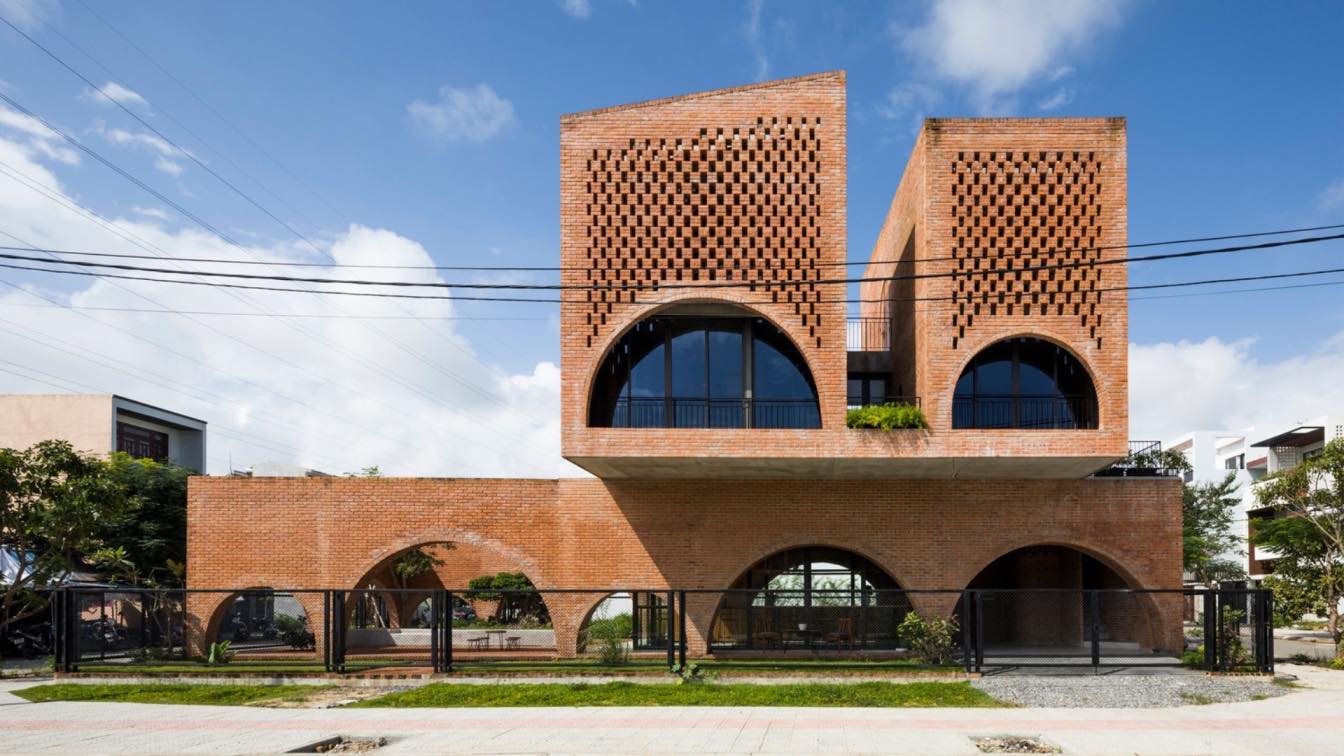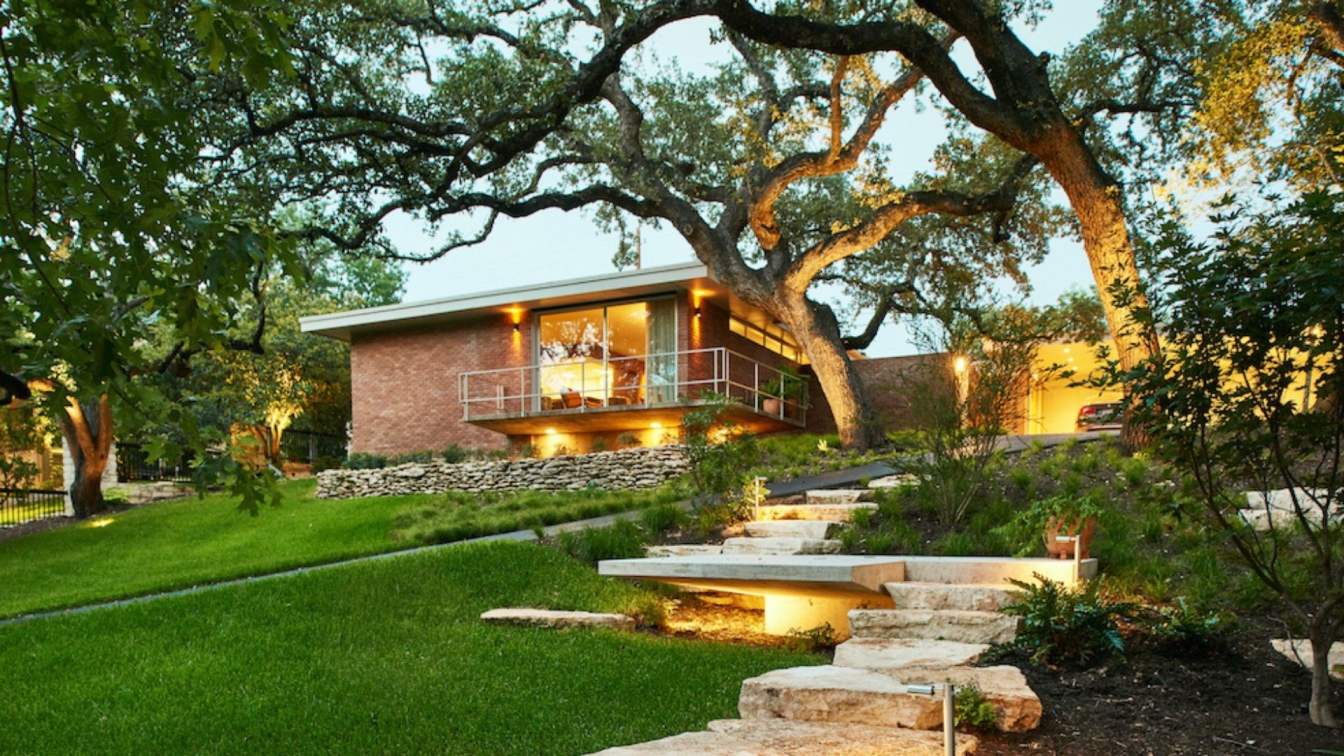Estudio Galera: Part of the air. CMMY is situated near the western edge of Pinamar city on a street that ends in a Cul de Sac, away from the sea and downtown. The house was built on an irregular shaped lot that presented a steep slope on the front and back, bordering a forest that will be plotted sometime in the future. The commission constrained the design as the clients wanted a modern and warm house with a gable roof –a demand that was at first interpreted as a large shed.
From the outside, CMMY stands as a rigid single volume with recesses and folds. On the inside, however, the typology is completely decomposed to generate spaces which articulate through the air; it is precisely this vacuum (the air) the one in charge of linking the living spaces. The air in CMMY House envelops it at the time that it is the essence and the principle of its uniqueness.

The imperceptible slope of the natural terrain passes free under the feet. The residence stands on a platform that contacts the natural ground by means of cylindrical concrete pylons and creates the first structural link between the terrain and the built work. The difference between the interior elevation of the house and the street level, together with the distance and vegetation, act as a privacy filter. The triple central height is the nexus to which the main rooms converge as in a community or vertical courtyard. The stairs are not simple connectors. Instead, their development and form seem to furrow the air as they connect the first floor with a balcony viewpoint that gives scale to the access and climb to the top level (attic). Here, a work and meeting space is located: a future studio upholstered with books and vinyls. In this sense, the staircase mediates between domestic life and work. To empty the center of the house it was necessary to organize the program on the perimeter, bearing in mind the slope. The connection to the central space was established by direct passage, door or slit depending on the need.
CMMY stands as a hybrid between two languages: the outside reflects what most people would imagine as a gabled house in the woods, while its flexible and versatile interior responds to contemporary forms of living.
The compact form is broken down into a ‘containment roof’ -that is cut, luffed and folded in search of sunlight-, and two recessed ends. Their materiality and the logic of the fenestration vary to generate intermediate spaces in the inside-outside connection.

A winter garden positioned to the west conserves heat to distribute it in the house in winter and contains it as a shield in summer. It, thus, turns into a thermal regulation device that enhances energy efficiency in a compact house with an envelope composed of several insulating layers.
The project was organized around common premises such as ensuring low maintenance. Wood folds and is protected under large eaves of a roof that becomes a parapet. The result is a single volume, a large constructed apparatus made up of small pieces that are part of a combined system that make up a whole.
If geometry defines the way of inhabiting spaces, the structure makes geometry possible.
Concrete piles are the point of contact with the sand and the support base for a structure formed by pine beams on which a metal structure is assembled. The structure takes the bending stresses creating the structural 'cage' where the different layers that make up floors and panels are assembled-on site. All the work was done by hand by local cementitians, blacksmiths and carpenters: from the concrete made in a spinning top and molded with PVC pipes to the assembly of the metal structure and of each roof and wall panel.
CMMY stands as a cold, geometrically rigorous container that offers shelter from inclement weather while allowing the development of a fluid, warm and flexible spatiality inside.



































































